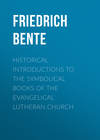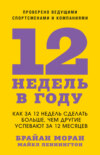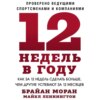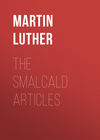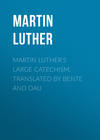Читать книгу: «Historical Introductions to the Symbolical Books of the Evangelical Lutheran Church», страница 3
10. Apostles' Creed and Early Christian Writers
The Christian writers of the first three centuries, furthermore, furnish ample proof for the following facts: that from the very beginning of the Christian Church the candidates for Baptism everywhere were required to make a confession of their faith; that from the beginning there was existing in all the Christian congregations a formulated confession which they called the rule of faith, the rule of truth, etc.; that this rule was identical with the confession required of the candidates for Baptism; that it was declared to be of apostolic origin; that the summaries and explanations of this rule of truth, given by these writers, tally with the contents and in part, also with the phraseology of the Apostles' Creed; that the scattered Christian congregations, then still autonomous, regarded the adoption of this rule, of faith as the only necessary condition of Christian unity and fellowship.
The manner in which Clement, Ignatius, Polycarp, Justin, Aristides, and other early Christian writers present the Christian truth frequently reminds us of the Apostles' Creed and suggests its existence. Thus Justin Martyr, who died 165, says in his first Apology, which was written about 140: "Our teacher of these things is Jesus Christ, who also was born for this purpose and was crucified under Pontius Pilate, procurator of Judea, that we reasonably worship Him, having learned that He is the Son of the true God Himself, and holding Him in the second place, and the prophetic Spirit in the third." "Eternal praise to the Father of all, through the name of the Son and of the Holy Spirit." Similar strains, sounding like echoes of the Second Article, may be found in the Epistles to the Trallians and to the Christians at Smyrna written by Ignatius, the famous martyr and bishop of Antioch, who died 107.
Irenaeus, who died 189, remarks: Every Christian "who retains immovable in himself the rule of the truth which he received through Baptism (ho ton kanona tes altheias akline en eauto katechon, hon dia tou baptismatos eilephe)" is able to see through the deceit of all heresies. Irenaeus here identifies the baptismal confession with what he calls the "rule of truth, kanon tes eiltheias" i. e., the truth which is the rule for everything claiming to be Christian. Apparently, this "rule of truth" was the sum of doctrines which every Christian received and confessed at his baptism. The very phrase "rule of truth" implies that it was a concise and definite formulation of the chief Christian truths. For "canon, rule," was the term employed by the ancient Church to designate such brief sentences as were adopted by synods for the practise of the Church. And this "rule of truth" is declared by Irenaeus to be "the old tradition," "the old tradition of the apostles": he te apo ton apostolon en te ekklesia paradosis. (Zahn, l. c., 379f.) Irenaeus was the pupil of Polycarp the Martyr; and what he had learned from him, Polycarp had received from the Apostle John. Polycarp, says Irenaeus, "taught the things which he had learned from the apostles, and which the Church has handed down, and which alone are true." According to Irenaeus, then, the "rule of truth" received and confessed by every Christian at his baptism was transmitted by the apostles. The contents of this rule of truth received from the apostles are repeatedly set forth by Irenaeus. In his Contra Haereses (I, 10, 1) one of these summaries reads as follows: "The Church dispersed through the whole world, to the ends of the earth has received from the apostles and their disciples the faith in one God, the Father Almighty, who has made heaven and earth and the sea and all things that are in them, and in one Jesus Christ, the Son of God, who became incarnate for our salvation; and in the Holy Spirit, who has proclaimed through the prophets the dispensations, and the advents, and the birth from a virgin, and the passion, and the resurrection from the dead, and the bodily assumption into heaven of the beloved Christ Jesus our Lord, and His manifestation from heaven in the glory of the Father." It thus appears that the "rule of truth" as Irenaeus knew it, the formulated sum of doctrines mediated by Baptism, which he, in accordance with the testimony of his teacher Polycarp, believed to have been received from the apostles, at least approaches our present Apostolic Creed.
11. Tertullian and Cyprian on Apostles' Creed
A similar result is obtained from the writings of Tertullian, Cyprian, Novatian, Origen and others. "When we step into the water of Baptism," says Tertullian, who died about 220, "we confess the Christian faith according to the words of its law," i. e., according to the law of faith or the rule of faith. Tertullian, therefore, identifies the confession to which the candidates for Baptism were pledged with the brief formulation of the chief Christian doctrines which he variously designates as "the law of faith," "the rule of faith," frequently also as tessara, watchword and sacramentum, a term then signifying the military oath of allegiance. This Law or Rule of Faith was, according to Tertullian, the confession adopted by Christians everywhere, which distinguished them from unbelievers and heretics. The unity of the congregations, the granting of the greeting of peace, of the name brother, and of mutual hospitality, – these and similar Christian rights and privileges, says Tertullian, "depend on no other condition than the similar tradition of the same oath of allegiance," i. e., the adoption of the same baptismal rule of faith. (Zahn, 250.)
At the same time Tertullian most emphatically claims, "that this rule of faith was established by the apostles, aye, by Christ Himself," inasmuch as He had commanded to baptize "in the name of the Father, and of the Son, and of the Holy Ghost." (Zahn, 252.) In his book Adversus Praxeam, Tertullian concludes an epitome which he gives of "the rule of faith" as follows: "That this rule has come down from the beginning of the Gospel, even before the earlier heretics, and so, of course before the Praxeas of yesterday, is proved both by the lateness of all heretics and by the novelty of this Praxeas of yesterday." (Schaff, Creeds of Christendom, 2, 18.) The following form is taken from Tertullian's De Virginibus Velandis: "For the rule of faith is altogether one, alone (sola), immovable, and irreformable, namely, believing in one God omnipotent the Maker of the world, and in His Son Jesus Christ, born of the Virgin Mary, crucified under Pontius Pilate, raised from the dead the third day, received into the heavens, sitting now at the right hand of the Father who shall come to judge the living and the dead, also through the resurrection of the flesh." Cyprian the Martyr, bishop of Carthage, who died 257, and who was the first one to apply the term symbolum to the baptismal creed, in his Epistle to Magnus and to Januarius, as well as to other Numidian bishops, gives the following as the answer of the candidate for Baptism to the question, "Do you believe?": "I believe in God the Father, in His Son Christ, in the Holy Spirit. I believe the remission of sins, and the life eternal through the holy Church."
12. Variations of the Apostles' Creed
While there can be no reasonable doubt either that the Christian churches from the very beginning were in possession of a definite and formulated symbol, or that this symbol was an amplification of the trinitarian formula of Baptism, yet we are unable to ascertain with any degree of certainty what its exact original wording was. There has not been found in the early Christian writers a single passage recording the precise form of the baptismal confession or the rule of truth and faith as used in the earliest churches. This lack of contemporal written records is accounted for by the fact that the early Christians and Christian churches refused on principle to impart and transmit their confession in any other manner than by word of mouth. Such was their attitude, not because they believed in keeping their creed secret, but because they viewed the exclusively oral method of impartation as the most appropriate in a matter which they regarded as an affair of deepest concern of their hearts.
It is universally admitted, even by those who believe that the apostles were instrumental in formulating the early Christian Creed, that the wording of it was not absolutely identical in all Christian congregations, and that in the course of time various changes and additions were made. "Tradition," says Tertullian with respect to the baptismal confession, received from the apostles, "has enlarged it, custom has confirmed it, faith observes and preserves it." (Zahn, 252. 381.) When, therefore, Tertullian and other ancient writers declare that the rule of faith received from the apostles is "altogether one, immovable, and irreformable," they do not at all mean to say that the phraseology of this symbol was alike everywhere, and that in this respect no changes whatever had been made, nor that any clauses had been added. Such variations, additions, and alterations, however, involved a doctrinal change of the confession no more than the Apology of the Augsburg Confession implies a doctrinal departure from this symbol. It remained the same Apostolic Creed, the changes and additions merely bringing out more fully and clearly its true, original meaning. And this is the sense in which Tertullian and others emphasize that the rule of faith is "one, immovable, and irreformable."
The oldest known form of the Apostles' Creed, according to A. Harnack, is the one used in the church at Rome, even prior to 150 A.D. It was, however, as late as 337 or 338, when this Creed, which, as the church at Rome claimed, was brought thither by Peter himself, was for the first time quoted as a whole by Bishop Marcellus of Ancyra in a letter to Bishop Julius of Rome, for the purpose of vindicating his orthodoxy. During the long period intervening, some changes, however, may have been, and probably were, made also in this Old Roman Symbol, which reads as follows: —
Pisteuo eis theon patera pantokratora; kai eis Christon Iesoun [ton] huion autou ton monogene, ton kupion hemon, ton gennethenta ek pneumatos hagiou kai Marias tes parthenou, ton epi Pontiou Pilatou staurothenta kai taphenta, te trite hemera anastanta ek [ton] nekron, anabanta eis tous ouranous, kathemenon en dexia tou patros, hothen erchetai krinai zontas kai nekrous; kai eis pneuma hagion, hagian ekklesian aphesin hamartion, sapkos anastasin. (Herzog, R. E. 1, 744.)
13. Present Form of Creed and Its Contents
The complete form of the present textus receptus of the Apostles' Creed, evidently the result of a comparison and combination of the various preexisting forms of this symbol, may be traced to the end of the fifth century and is first found in a sermon by Caesarius of Arles in France, about 500. – In his translation, Luther substituted "Christian" for "catholic" in the Third Article. He regarded the two expressions as equivalent in substance, as appears from the Smalcald Articles, where he identifies these terms, saying: "Sic enim orant pueri: Credo sanctam ecclesiam catholicam sive Christianam." (472, 5; 498, 3.) The form, "I believe a holy Christian Church," however, is met with even before Luther's time. (Carpzov, Isagoge, 46.) – In the Greek version the received form of the Apostles' Creed reads as follows: —
Pisteuo eis theon patera, pantokratora, poieten ouranou kai ges. Kai eis Iesoun Christon, huion autou ton monogene, ton kurion hemon, ton sullephthenta ek pneumatos hagiou, gennethenta ek Marias tes parthenou, pathonta epi Pontiou Pilatou, staurothenta, thanonta, kai taphenta, anastanta apo ton nekron, anelthonta eis tous ouranous, kathezomenon en dexia theou patros pantodunamou, ekeithen erchomenon krinai zontas kai nekrous. Pisteuo eis to pneuma to hagion, hagian ekklesian, hagion koinonian, aphesin hamartion sarkos anastasin, zoen aionion, Amen.
As to its contents, the Apostles' Creed is a positive statement of the essential facts of Christianity. The Second Article, says Zahn, is "a compend of the Evangelical history, including even external details." (264.) Yet some of the clauses of this Creed were probably inserted in opposition to prevailing, notably Gnostic, heresies of the first centuries. It was the first Christian symbol and, as Tertullian and others declare, the bond of unity and fellowship of the early Christian congregations everywhere. It must not, however, be regarded as inspired, much less as superior even to the Holy Scriptures; for, as stated above, it cannot even, in any of its existing forms, be traced to the apostles. Hence it must be subjected to, and tested and judged by, the Holy Scriptures, the inspired Word of God and the only infallible rule and norm of all doctrines, teachers, and symbols. In accordance herewith the Lutheran Church receives the Apostles' Creed, as also the two other ecumenical confessions, not as per se divine and authoritative, but because its doctrine is taken from, and well grounded in, the prophetic and apostolic writings of the Old and New Testaments. (CONC. TRIGL. 851, 4.)
14. The Nicene Creed
In the year 325 Emperor Constantine the Great convened the First Ecumenical Council at Nicaea, in Bithynia, for the purpose of settling the controversy precipitated by the teaching of Arius, who denied the true divinity of Christ. The council was attended by 318 bishops and their assistants, among whom the young deacon Athanasius of Alexandria gained special prominence as a theologian of great eloquence, acumen, and learning. "The most valiant champion against the Arians," as he was called, Athanasius turned the tide of victory in favor of the Homoousians, who believed that the essence of the Father and of the Son is identical. The discussions were based upon the symbol of Eusebius of Caesarea, which by changes and the insertion of Homoousian phrases (such as ek tes ousias tou patrous; gennetheis, ou poietheis; homoousios to patri) was amended into an unequivocal clean-cut, anti-Arian confession. Two Egyptian bishops who refused to sign the symbol were banished, together with Arius, to Illyria. The text of the original Nicene Creed reads as follows: —
Pisteuomen eis hena theon, patera pantokratora, panton oraton te kai aoraton poieten. Kai eis hena kurion Iesoun Christon, ton huion tou theou, gennethenta ek tou patros monogene, toutestin ek tes ousias tou patros, theon ek theou, phos ek photos, theon alethinon ek theou alethinou, gennethenta, ou poiethenta, homoousion to patri, di' ou ta panta egeneto, ta te en to ourano kaita epi tes ges; ton di' hemas tous anthropous kai dia ten hemeteran soterian katelthonta kai sarkothenta kai enanthropesanta, pathonta, kai anastanta te trite hemera, kai anelthonta eis tous ouranous, kai erchomenon palin krinai zontas kai nekrous. Kai eis to pneuma to hagion. Tous de legontas, hoti pote hote ouk en, kai hoti ex ouk onton egeneto, en ex heteras hupostaseos e ousias phaskontas einai, e ktiston, e alloioton, e trepton ton huion tou theou, toutous anathematizei he katholike kai apostolike ekklesia. (Mansi, Amplissima Collectio, 2, 665 sq.)
15. Niceno-Constantinopolitan Creed
In order to suppress Arianism, which still continued to flourish, Emperor Theodosius convened the Second Ecumenical Council, in 381 at Constantinople. The bishops here assembled, 150 in number, resolved that the faith of the Nicene Fathers must ever remain firm and unchanged, and that its opponents, the Eunomians, Anomoeans, Arians, Eudoxians, Semi-Arians, Sabellians, Marcellians, Photinians, and Apollinarians, must be rejected. At this council also Macedonius was condemned, who taught that the Holy Spirit is not God: elege gar auto me einai theon, alla tes theontos tou patros allotrion. (Mansi, 3, 568. 566. 573. 577. 600.) By omissions, alterations, and additions (in particular concerning the Holy Spirit) this council gave to the Nicene Creed its present form. Hence it is also known as the Niceno-Constantinopolitan Creed. The Third Ecumenical Council, which assembled at Toledo, Spain, in 589, inserted the word "Filioque," an addition which the Greek Church has never sanctioned, and which later contributed towards bringing about the great Eastern Schism. A. Harnack considers the Constantinopolitanum (CPanum), the creed adopted at Constantinople, to be the baptismal confession of the Church of Jerusalem, which, he says, was revised between 362 and 373 and amplified by the Nicene formulas and a rule of faith concerning the Holy Ghost. (Herzog, R. E., 11, 19f.) Following is the text of the CPanum according to Mansi:
Pisteuomen eis hena theon patera, pantokratora, poieten ouranou kai ges, oratwn te pantwn kai aoratwn. Kai eis hena kurion Iesoun Christon ton huion tou theou ton monogene, ton ek tou patros gennethenta pro panton ton aionon, phos ek photos, theon alethinon ek theou alethinou, gennethevta, ou poiethenta, homoousion to patri, di' ou ta panta egeneto, ton di' hemas tous anthropous kai dia ten hemeteran soterian katelthovnta ek tov ouranon, kai sarkothenta ek pneumatos hagiou kai Marias tes parthenou, kai enanthropesanta, staurothenta te huper hemon epi Pontiou Pilatou, kai pathonta, kai taphenta, kai anastanta te trite hemera kata tas gpaphas, kai anelthonta eis tous ouranous, kai kathezomenon ek dexion tou patros, kai palin erchomenon meta doxes krinai zontas kai nekrous; ou tes basileias ouk estai telos. Kai eis pneuma to hagion, to kurion, to zoopoion, to ek tou patros ekporeuomenon, to sun patri kai huio sumproskunoumenon kai sundoxazovmenon, to lalesan dia ton propheton, eis mian hagian katholiken kai apostoliken ekklesian. Homologoumen hen baptisma eis aphesin hamartion; prosdokomen anastasin nekron, kai zwen tou mellontos aionos. Amen. (3, 565.)
16. The Athanasian Creed
From its opening word this Creed is also called Symbolum Quicunque. Roman tradition has it that Athanasius, who died 373, made this confession before Pope Julius when the latter summoned him "to submit himself to him [the Pope], as to the ecumenical bishop and Supreme arbiter of matters ecclesiastical (ut ei, seu episcopo oecumica et supremo rerum ecclesiasticarum arbitro, sese submitteret)." However, Athanasius is not even the author of this confession, as appears from the following facts: 1. The Creed was originally written in Latin. 2. It is mentioned neither by Athanasius himself nor by his Greek eulogists. 3. It was unknown to the Greek Church till about 1200, and has never been accorded official recognition by this Church nor its "orthodox" sister churches. 4. It presupposes the post-Athanasian Trinitarian and Christological controversies. – Up to the present day it has been impossible to reach a final verdict concerning the author of the Quicunque and the time and place of its origin. Koellner's Symbolik allocates it to Gaul. Loofs inclines to the same opinion and ventures the conjecture that the source of this symbol must be sought in Southern Gaul between 450 and 600. (Herzog, R. E., 2, 177.) Gieseler and others look to Spain for its origin.
Paragraphs 1, 2, and 40 of the Athanasian Creed have given offense not only to theologians who advocate an undogmatic Christianity, but to many thoughtless Christians as well. Loofs declares: The Quicunque is unevangelical and cannot be received because its very first sentence confounds fides with expositio fidei. (H., R. E., 2, 194.) However, the charge is gratuitous, since the Athanasian Creed deals with the most fundamental Christian truths: concerning the Trinity, the divinity of Christ, and His work of redemption, without the knowledge of which saving faith is impossible. The paragraphs in question merely express the clear doctrine of such passages of the Scriptures as Acts 4, 12: "Neither is there salvation in any other, for there is none other name under heaven given among men whereby we must be saved;" John 8, 21: "If ye believe not that I am He, ye shall die in your sins"; John 14, 6: "Jesus saith unto him, I am the Way, the Truth, and the Life; no man cometh unto the Father but by Me." In complete agreement with the impugned statements of the Athanasian Creed, the Apology of the Augsburg Confession closes its article "Of God" as follows: "Therefore we do freely conclude that they are all idolatrous, blasphemers, and outside of the Church of Christ who hold or teach otherwise." (103)
In the early part of the Middle Ages the Quicunque had already received a place in the order of public worship. The Council of Vavre resolved, 1368: "Proinde Symbolum Apostolorum silenter et secrete dicitur quotidie in Completorio et in Prima, quia fuit editum tempore, quo nondum erat fides catholica propalata. Alia autem duo publice in diebus Dominicis et festivis, quando maior ad ecclesiam congregatur populus, decantantur, quia fuere edita tempore fidei propalatae. Symbolum quidem Nicaenum post evangelium cantatur in Missa quasi evangelicae fidei expositio. Symbolum Athanasii de mane solum cantatur in Prima, quia fuit editum tempore quo maxime fuerunt depulsa et detecta nox atra et tenebrae haeresium et errorum." (Mansi, 26, 487.) Luther says: "The first symbol, that of the apostles, is indeed the best of all, because it contains a concise, correct and splendid presentation of the articles of faith and is easily learned by children and the common people. The second, the Athanasian Creed, is longer … and practically amounts to an apology of the first symbol." "I do not know of any more important document of the New Testament Church since the days of the apostles" [than the Athanasian Creed]. (St. L. 10, 994; 6, 1576; E. 23, 253.)

